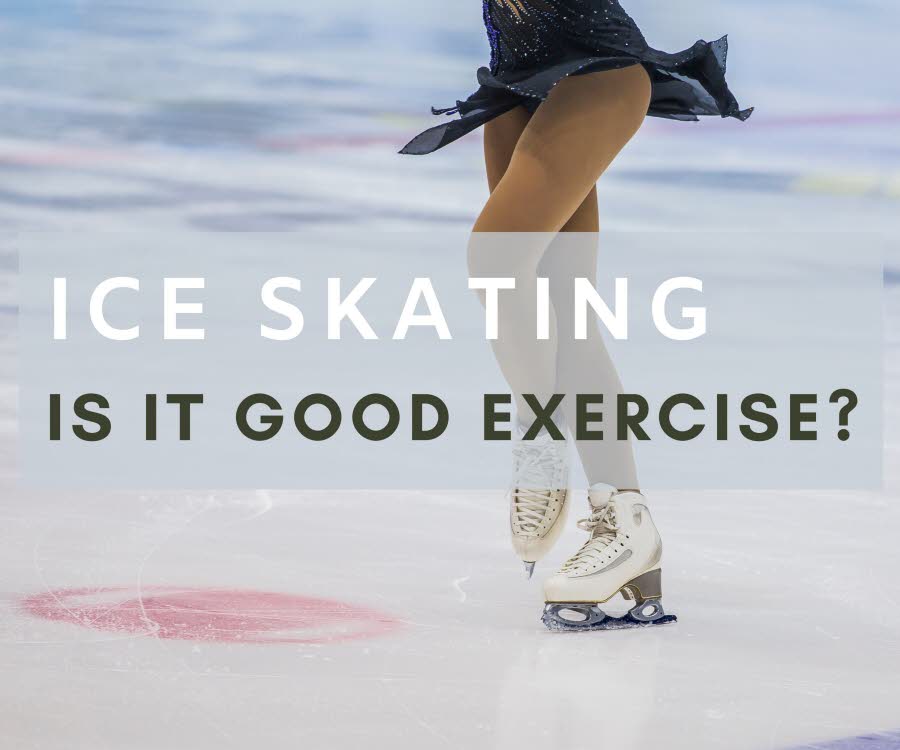We have all seen ice skaters on the T.V looking great and seeming super fit. The physical demands of competing at high levels are without question, but is figure skating a good exercise generally?
When all is taken into account, with the exception of injuries, which are always a possibility in ice skating, then yes, ice skating is a good exercise for both your physical and mental health (with some exceptions that are shown below). Whether it is the best exercise for particular health gains remains in doubt, but if the comparison is inactivity, then ice skating is good exercise. Form your own opinion by reading the article below, where each element of figure skating is examined in terms of exercise.

class="wp-block-heading">Is ice skating good exercise for your physical health?
There many elements to good physical health in terms if ice skating. I have taken a look at some of them here.
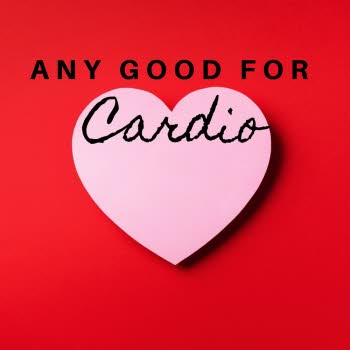
So is ice skating good cardio exercise?
So is ice skating a good cardio exercise? Well the answer is inconclusive when it comes to reports from official sources. Some organizations believe it is good cardio exercise and others not so much.
From my point of view, I definitely feel that ice skating has helped to keep me fit.
There is also no doubt that professional ice skaters are fit. This is because they do very high levels of ice skating that is fast paced, skating long programs that require a great deal of strength. They also do a lot of off ice training which involves cardio training such as interval training and plyometrics.
Ice skating is as good a cardio exercise as you make it. If you ponder round the rink talking to your friends, then the cardio exercise element will be small or almost non existent. If on the other hand however, you skate to your limit for an hour, you will definitely feel like you have had a cardio workout.
Ice skating does definitely have a cardio exercise element, but will not have the same impact as pure cardio workouts such as interval training.
There are several great elements about figure skating is great in terms of cardio exercise.
- Figure skating is practiced in a cool environment. Without all the sweat you don’t notice how hard you are exercising.
- It’s great fun, so you don’t tend to look at it as cardio exercise.
- As you progress, you tend to do more and more off ice, which tends to be higher in cardio exercise.
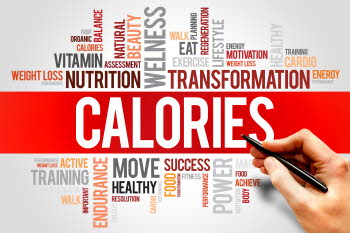
How many calories do you burn during exercise whilst ice skating?
Well, according to Harvard Health Publishing at Harvard Medical School
Ice skating burns the following calories:
| Calories burned by a 125 pound person in 30 minutes | Calories burned by a 155 pound person in 30 minutes | Calories burned by 185 pound person in 30 minutes |
| 210 | 260 | 311 |
Of course these figures are generalizations. It depends on what you are doing, how you are skating and how much effort you are putting in. But the calorie burn is there, so it may well help burn off a few pounds.
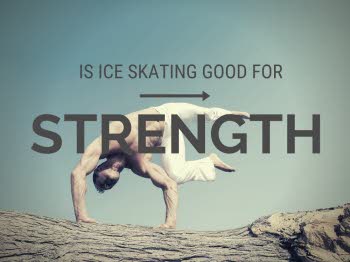
Is ice skating good for strength?
Yes definitely. Ice skating is a good exercise for strength. Of course there are obvious gains in the lower body, with calves, quads and glutes all increasing in strength and mass. There are also other strength gains that may not be so obvious. The pelvic floor (link to a Well Balanced Women article suggesting that ice skating may be good for the pelvic floor) and core muscles are greatly affected by ice skating. The pelvic floor has the shape of a hammock and really benefits from the lateral pushing movements used in figure skating.
You don’t see many figure skaters without a toned posterior. This is because of the constant use of the glutes. Pushing upwards away from the ice and all those straight free leg extensions behind you make for a great glute workout.
Lower legs definitely get a work out when ice skating. They gain strength and mass almost without you noticing, because you are almost always supporting your weight over bent knees. So you end up spending a lot of time in a semi squat position. As your skill at ice skating increases, much of this time will be spent one one leg.
An area that you may not immediately associate with figure skating is the upper body. O.K so it’s unlikely that you will end up looking like Arnold Schwarzenegger. But I remember quite clearly when I started skating, how much my shoulders ached from holding my arms out to the side for balance all the time. You will also notice strength gains from being in hold as an ice dancer and of course when doing lifts. You are not going to pound on the upper body muscle, but it will definitely help to tone.
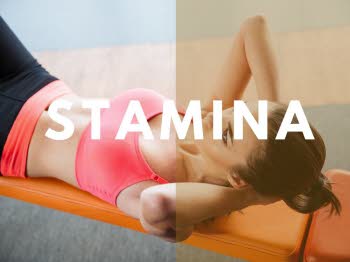
Is ice skating a good exercise for stamina?
Although there is a great requirement for stamina in figure skating, especially in the long programs, it is debatable whether ice skating develops stamina or just requires it. It is without a doubt that figure skating develops muscle which helps, but does it develop stamina?
I think that there is some stamina development during figure skating, but most of the increases in stamina are due to off ice training.
When you see Olympic athletes perform in the winter games, their extreme stamina comes from many areas, not just figure skating. Athletes do a phenomenal amount of off ice training. There is also of course all nutrition, and hours upon hours on the ice.
So is ice skating good for stamina? Well it won’t harm it. It might even improve it. But if you want to significantly improve your stamina, then you need to do the off ice training too.

Will ice skating improve flexibility?
Well, yes it does, but not in the way you might think. Ice skating itself, doesn’t really help your flexibility. You are not really doing any massively bendy moves to make you flexible, unless you were that flexible before and so can do the moves.
What ice skating does do is encourage you to become flexible. You will learn this the first time you try a drag on ice. The burning sting as you realize that stretching your back leg out across the ice stings down the inside of your leg. It won’t be long until you think, how do I prevent that from happening next time. So you start doing flexibility exercises.
The same goes for when you are practicing your first spiral and that leg just won’t go any higher (that requires flexibility and strength actually), you realize you need to be more flexible.
So you start a regular flexibility routine, maybe start taking yoga classes. So it’s not the ice skating that made you flexible, but ice skating acts as a constant reminder that you need to stay flexible.
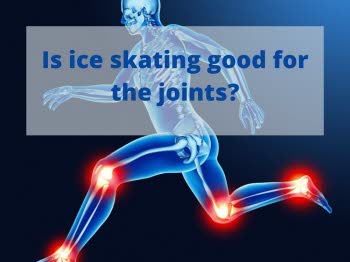
Is ice skating a good exercise for Joint strength?
Well, according to Kathryn Steiner MD, physician for the 2017 Skating Academy of Boston ‘Skating is a low impact activity, which causes less stress on the joints, in comparison to other exercises like running. However, once you begin jumping and spinning, skating can become high impact.’ (If you want to read the whole article by New England Baptist Hospital, it is here).
So the gentle act of ice skating puts less stress on your joints than other sports that are much higher impact, but when you get into the sport more, some of the moves can be high impact.
But does it increase joint strength?
Well I couldn’t find any particular research to support that ice skating strengthens your joints, but it certainly increases muscle in the legs. I wonder whether this will help to stabilize the joints? I am no doctor, but with all the balance work required when skating, I suspect that ice skating may strengthen the control muscles around the joint, though I have no evidence to support that.
One thing I will add is that ice skating does become very high impact at the higher levels. Forces much greater than the skaters weight can be created on the joints when landing jumps and I know plenty of skaters with joint issues. Falls will also take their toll on joints, so the picture of whether ice skating strengthens the joints is a rather blurry one. I will leave it to you to decide.
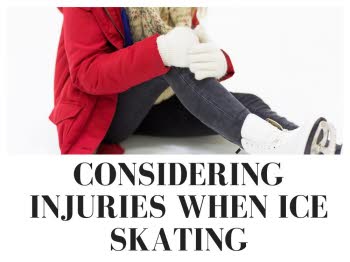
Considering injuries when using ice skating as an exercise
Obviously there are plenty of injuries you can pick up ice skating, it is inherently a hazardous sport. I have had a few and they can be pretty scary and in some cases serious, especially head injuries, so bare in mind that they do happen. I am not going to list all of the injuries you can get. If you would like to have a look here is a PDF of them, including some possible ways to reduce them.
In general, if you listen to your coach, practice as carefully as you can, minimize over training one part of the body or one particular element of ice skating, you can reduce injuries. You can also reduce injuries by warming up properly, having a good off ice training regime and maintaining flexibility. Then there is always crash pads to reduce fall impact, don’t be afraid to wear them if you are unsure about a certain move or all of the time, better to feel a bit embarrassed than gain a nasty injury.
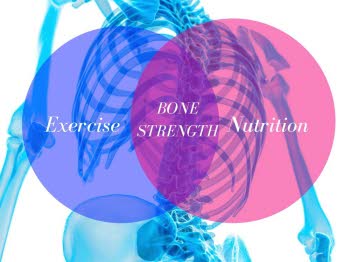
Will ice skating increasing bone strength/density?
Well, it’s no hidden fact that exercise increases bone density. But what is bone density? Bone density is a measurement of how much bone mineral is in the bone itself. This is known as the bone mineral density (BMD) and is measured by dual energy X-ray absorbtiometry (DXA) or by quantitative ultrasound.
BMD is used as a measure of how strong your bones are. Your bones do change with exercise and exercise can be good way to strengthen bones by increasing the BMD. But how good an exercise is ice skating for increasing BMD?
Well there is plenty of research evidence to suggest that figure skating has an effect on bone density as this report shows (click to view the report).
This report shows how higher impact elements of the ice skating sport give higher yields of BMD. The report shows that free/solo skaters and pairs skaters have higher BMD than ice dancers (who don’t jump).
However, there are two sides to this story as this report says that fractures appeared in skaters due to the impact of the sport rather than a low BMD. So the way I read that, is that the high impact parts of figure skating that cause the bones to get stronger are also the very same exercises that cause them to get fractured. Here is the report.
So what to take from all of this? I have looked through a lot of research papers and to be honest, to understand all of it, you would need to be some kind of medical professional, which I am not. But my understanding of it was that…….. Yes ice skating does increase your bone strength when measured by bone density. The trouble is, bone density is only part of the story. There is also elasticity of the bone and the architecture of the bone, diet, age and lifestyle, so it’s complicated.
In my opinion ice skating does increase bone strength, as research has shown, though you will have to maintain the ice skating to maintain the bone strength (click here to view the article showing the research behind this), but if you went to the doctors and asked for a good way to strengthen your bones, the doctor probably wouldn’t recommend ice skating. For a start it is inherently a hazardous sport that you could break bones in, when falling. There are also probably more effective load bearing exercises that will have a more desired effect with less risk, like the ones listed here.
In summary, most exercise, including ice skating will increase bone strength , when combined with calcium and vitamin D. In most cases, any exercise is better for your bone strength than just doing nothing.
If you are interested in increasing your bone strength here is a great PDF of what to do from web MD.
Please note, I am not a doctor. I am a figure skater that spent hours looking at research papers, to give you a short concise answer. Always consult a medical professional before taking up exercise, altering your diet or taking vitamin supplements and if you have any concerns or questions about bone health or strength.
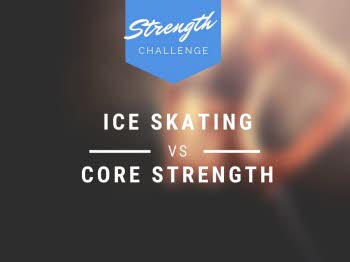
Is ice skating a good exercise for core strength
Yes, yes, a thousand times yes. In my opinion, ice skating is a brilliant exercise for core strength. I have really noticed my core strength come on whilst I have been ice skating.
When you ice skate, you are achieving an eloquent sequence of balancing events. First you are standing on two feet, but you are on slippy ice, so you are balancing to keep upright. Then you strike out on an edge on a single foot. Now you are balancing in slippy ice on one leg. Some of this balance is created by the leg, but a great deal is created by your core.
As your skating progresses, you spend longer and longer times on one leg or the other, all the time your core strength is increasing.
As you get n=better at skating, the elements that you learn become more complicated. Many of them requiring more and more core strength. When you do a leg swing in ice dance, as your leg swings forward, your body wants to fly back, this would end in disaster, so what happens is, you crunch up your stomach muscles to keep the weight forward. Simple exercises like this keep working your core over and over.
When you skate an inside edge, you crunch the muscles in your side to keep upright and compensate for the curve. All the elements seem to use your core muscles in one way or another. Rockers, brackets, choctaws, spins, jumps, spirals, the list goes on and on, all requiring core strength from the front, side, back or a combination of your core muscles.
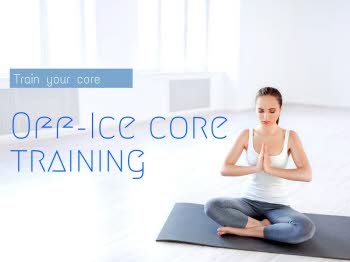
Core training to support figure skating training
Figure skating requires a strong core. Some of the core strength gains can be gained from actually doing the figure skating. It is a very good idea do do separate core training to assist your ice skating.
I personally enjoy yoga, and practice it almost daily. I find that yoga helps with core strength and with balance. I also do separate core exercises. An excellent guide to the best core exercises is this book – Core strength training- published by DK. I have used this book for years. I first bought it from the book man that came around my workplace. I didn’t take much of a look through it when I bought it, but when I read it. WOW, it is the best book on core exercise I have ever owned.
I mentioned some of the core exercises I was doing to a qualified physiotherapist once. He was impressed by how good my exercises were. He asked me how I knew about them and I told him it was the book. The book has loads of color pictures of the exercised and graphics of all the muscles used. There are also complete workouts for all levels of ability in the book. Here is the link to buy it on Amazon (link to Amazon – commission earned – these small commissions cost you nothing, but help keep this site going).
Its not just me that thinks that core exercise is a good idea to support ice skating. US Figure skating have published this simple guide to core exercise.
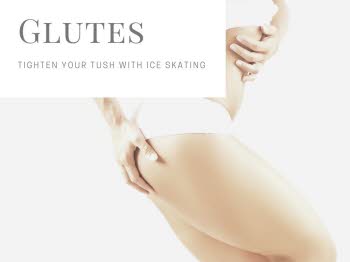
Ice skating improves your glutes
Yes, if you want to tighten that tush, build up your bum or perfect your posterior, ice skating is the way to go. Olympic figure skating medalist Scott Moir on a T.V program on exercise once said that the glutes are the source of your power. Well I am fairly sure sure that your power comes from all your muscles, but you can see his point. The glutes are a well used muscle in figure skating.
Ice skaters as a rule have toned bums, this is because of all the glute work involved in ice skating. All those pushes forward, all those rear leg extensions.
Ice skating itself is a fantastic workout for the glutes and I have seen dramatic changes in my glutes in the time I have been ice skating.

Is ice skating good for mental health?
In short yes, here are the reasons why.
Ice skating is a good source of exercise and exercise causes your brain to emit ‘happy chemicals’
We have all heard of endorphins right? Well in-case you haven’t, endorphins are neurochemicals emitted by the hypothalamus and pituitary gland in the brain according to J. Kip Matthews, PhD sport and exercise psychologist (as featured in an article published by CNN health). Endorphins have a similarity in terms of their structure to morphine. They act like a pain killer when we experience pain or when our bodies are under the physical pressure of exercise.
“Endorphins are also involved in natural reward circuits related to activities such as feeding, drinking, sexual activity and maternal behavior,” (Source CNN Health). Studies have hinted at the possibility that endorphins don’t actually rise until an hour after exercise. In-fact a recent study in Germany found that endorphins cannot cross the blood brain barrier, but the body creates a neurotransmitter called anandamide which can cross the blood brain barrier.
Higher levels than usual of norepinephrine and serotonin have been detected due to exercise, which may be the reason we feel so good after exercise. Low levels of norepinephrine and serotonin have been found in those people suffering from depression. So a boost in these happy chemicals could help in warding away the blues. I always feel so much better after skating, more energized and generally happier.
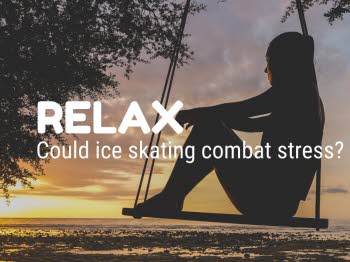
Is ice skating a good exercise to combat stress?
In my opinion yes, it helps me. But I am not a doctor. However Dr J. Kip Matthews, Phd sport and exercise psychologist suggested that when we exercise, we get better at dealing with stress. “What appears to be happening is that exercise affords the body an opportunity to practice responding to stress, streamlining the communication between the systems involved in the stress response,”. “The less active we become, the more challenged we are in dealing with stress.” (Source CNN Health)
I personally use ice skating as an exercise to de-stress. As well as being a form of exercise that may create happy chemicals, it physically takes you away from your worries.
When you are at the ice rink you are physically away from your work and from the stresses of home. It is also a great occupier of the mind in terms of concentrating. One of the great beauties of ice skating is to exist purely in the moment. If your mind starts to wonder to much, you lose concentration and fall. So you concentrate. When you are skating that edge, that is all you are thinking about. You are living purely in the moment. That for me is a great reliever of stress.

Is ice skating good to promote a positive body image?
Well, here ice skating is somewhat of a double edged sword. On one hand, ice skating is not good for body image. There has been much press coverage of this in the last few years, with some ice skaters feeling that they need to conform to a super slim ideal. In recent years this had led to high profile figure skaters disclosing eating disorders. With famous skaters highlighting the issue, hopefully the major sporting associations for figure skating will take steps to address the issue.
On the other hand, could the exercise involved in figure skating change your body for the better? Combined with sometimes rather revealing outfits and public exhibitions such as shows, galas and competitions, can you become more confident in showing off your body and therefore more happy with your own body image? The jury is still out on that one.
There are no hard and fast statistics for me to show you here. Figure skating really can be bad and good for body image.
Enjoy your body, enjoy the sport and promote everyone based on who they are, not what they look like.

Ice skating can be good for your social life too
Ice skating will definitely flex your social muscles. It is a great way to meet people. This is good for your mental health too, getting out there and talking to like minded people. There are plenty of chances to meet new friends. Whether it is hanging out in the rink cafe, people from your group skating lesson or people from your skating club, you will definitely meet people ice skating.
When you first start going, OK you won’t know anybody. My rink was out of my area and so I knew no one there, but after a while I soon started to make friends and you will too.

Is ice skating a good exercise to boost your confidence?
Well, yes and no. Yes it’s good for your confidence in terms of, as you ice skate you get better. There are always people around the rink from the very first time you get there, so you get used to skating in front of people. As you skating gets better, you feel more confident at skating.
On the other hand, when you see people skating loads better than you, it can hit your confidence and it’s hard not to compare yourself. See ice twizzle article on not comparing yourself.
Also it’s a knock to your confidence when you have a fall, especially if it’s a fall that causes an injury. The worse the injury, the more it knocks your confidence.
When competing, at first, it really is hard to get out there and perform, that goes for shows too, but after you have done them, your confidence blossoms.

Get yourself checked out before you consider ice skating as an exercise for you
We have all read the disclaimer at the gym right? Well ice skating is no different. Before taking on any new exercise, you should get yourself checked out by a competent medical physician. You should also seek qualified advice when taking vitamin supplements and/or changing your diet. Remember that ice skating is inherently a dangerous sport.
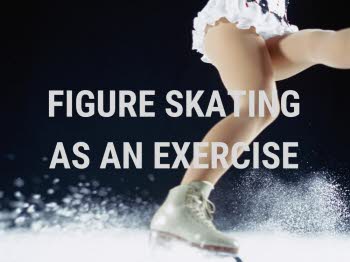
So……. In summary of ice skating as an exercise
In my opinion, the best exercise is the exercise that you enjoy. Why? because it is the one that you are going to stick to. The exercise that we enjoy is more likely to become a weekly routine and embedded into our life.
It is regular exercise that makes a difference. There are of course better exercises for cardio, core strength, bone density as discussed. There are certainly less hazardous exercises. But all in all, if the other option is to sit around doing nothing, then yes, ice skating is an excellent exercise. It will help keep you active, encourage you take extra exercise to help with your skating and you can make plenty of friends doing it.
Ice skating seems to be a glue that helps to hold me together. It may be like that for you too.
If you liked this article, then you might enjoy ‘Is yoga good for figure skating?’
Does yoga help figure skaters? Yoga can help with functional strength, flexibility and balance. It may be able to help with spirals and Biellman spins. Check out the full article here.

